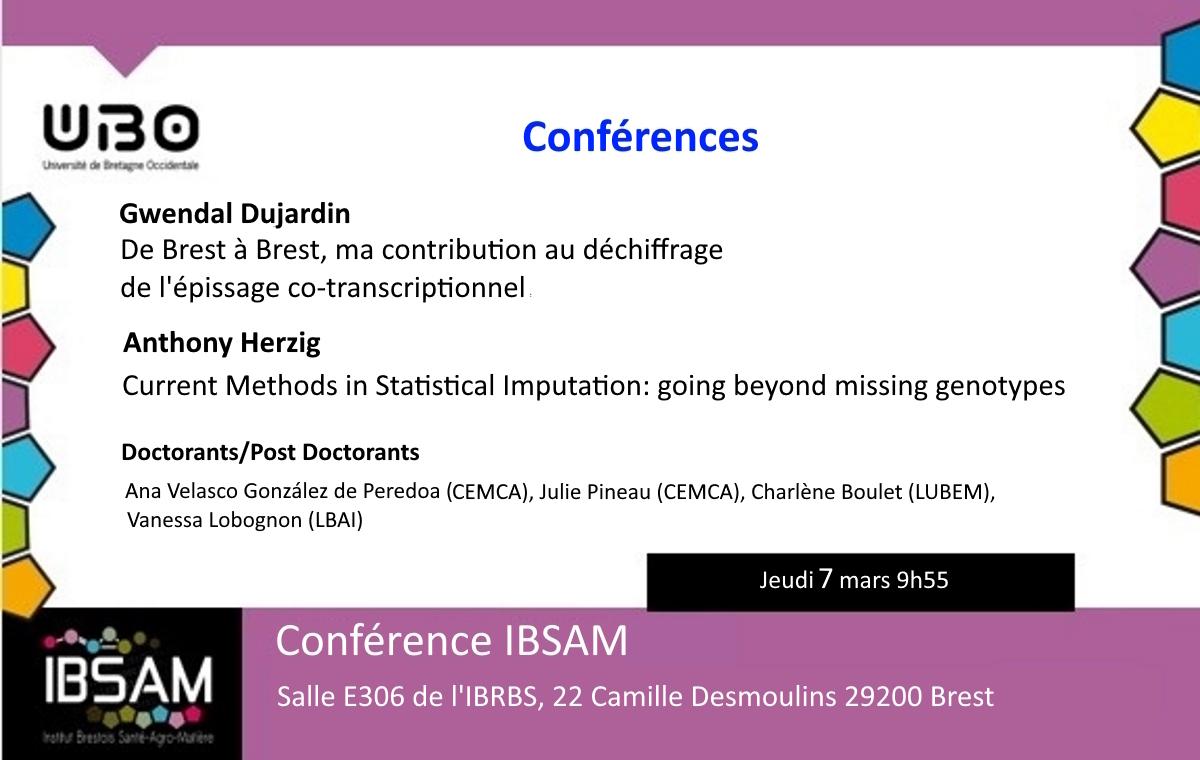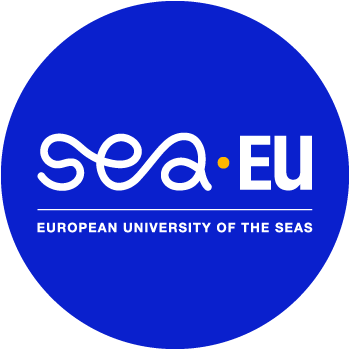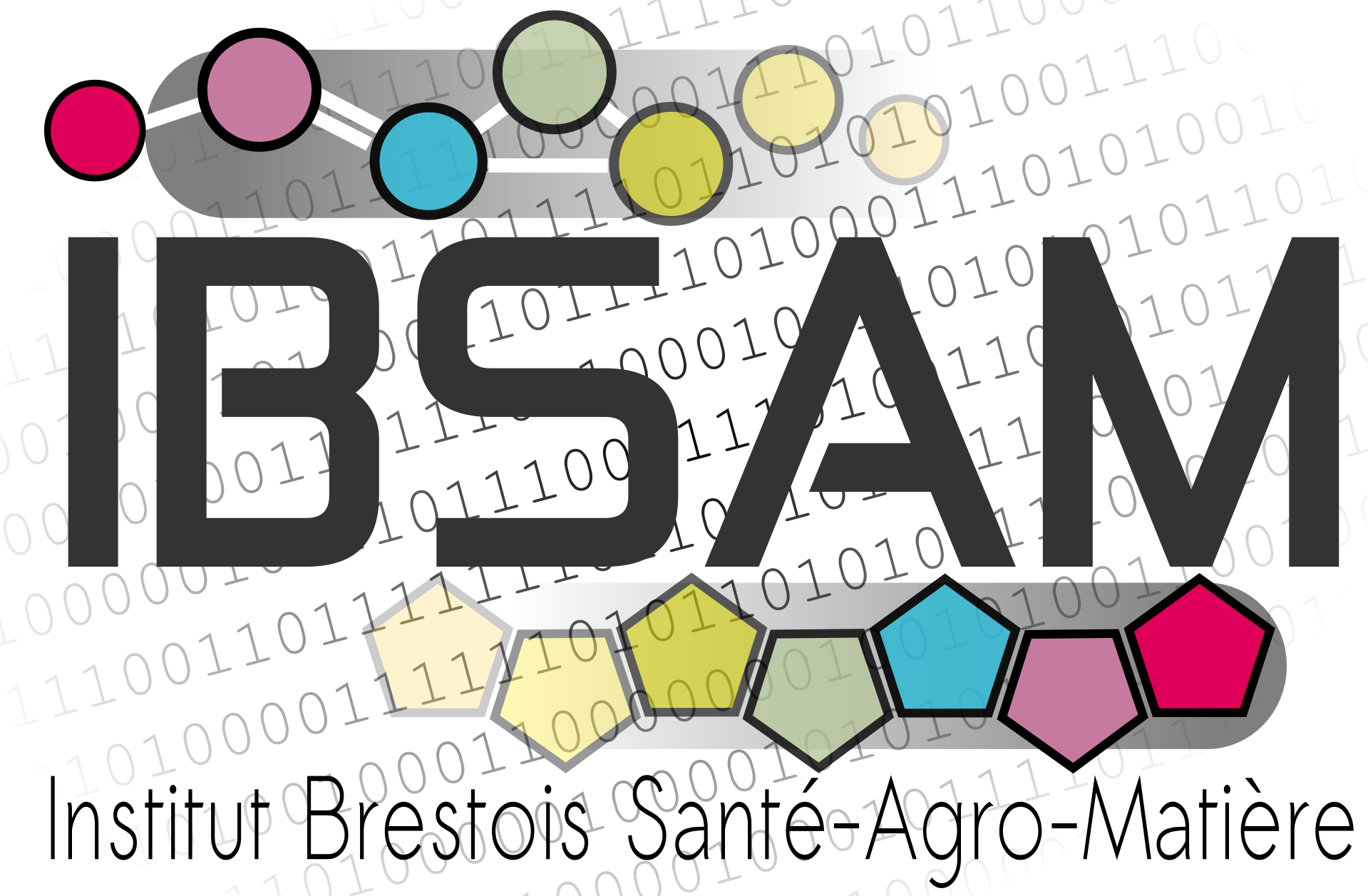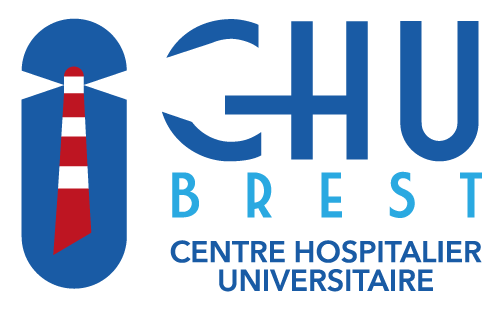
High-resolution mass spectrometry and tears: Characterization of the organosulfur compounds in onions
Ana Velasco González de Peredoa, Alicia marotoa, Antony Memboeufa
a- Univ. Brest, UMR UBO-CNRS 6521, CEMCA, F-29200 Brest / ana.velascogonzalezdeperedo@univ-brest.fr
Nowadays, people are paying more attention to their eating habits, largely due to the strong correlation made between nutrition and overall health. The onion (Allium cepa L.), a vegetable widely consumed throughout the world, is known not only for its culinary importance but also for its nutritional and health-promoting properties[1]. These characteristics, which include both sensory elements such as aroma and taste, as well as medicinal properties, are closely linked to the presence of sulfur compounds, which account for up to 5% of the dry weight of an onion[2]. Given the importance of these compounds, suitable analytical methods are required for their study. This work proposes the use of high-resolution mass spectrometry in combination with liquid chromatography to carry out the analysis and identification of the organosulfur compounds present in onion bulbs. Specifically, all high resolution (HR-MS) high mass accuracy (HA-MS) measurements were carried out in positive ion mode on an electrospray ionization quadrupole time-of-flight mass spectrometer (ESI-QqToF). While more commonly employed techniques, such as gas chromatography, primarily focus on onion aroma compounds generated from cysteine sulfoxides precursors, our high-resolution MS and CID tandem MS approaches not only enhance the accuracy and reliability in quantifying these compounds but also provide a more comprehensive insight into the biosynthetic pathways of their precursors[3]. Furthermore, the developed ESI-QqToF method was applied to several onion varieties, offering a potential avenue for future research. The results obtained pave the way for using HR-HAMS and MS/MS to characterize onion varieties according to their content of organosulfur compounds, opening new perspectives for the differentiation and understanding of these compounds in various onion cultivars. The possible characteristic composition of onion samples depending on their geographical area of cultivation, the conditions of said crop, or the variety itself, will eventually mean an increase in the dissemination, cultivation, and marketing of the local product[4].
Références.
1- Q. Wan, N. Li, L. Du, R. Zhao, M. Yi, Q. Xu, Y. Zhou. Food Science & Nutrition, 2019, 7, 2451.
2- S. Huang. 2019. Annual Review of Plant Biology, 2019, 70, 187-212.
3- D.A. Ramirez, D.A. Locatelli, R.E. González, P.F. Cavagnaro, A.B. Camargo. Journal of Food Composition and Analysis 2017, 61, 4-19.
4- M. Abdelrahman, S. Hirata, T. Mukae, T. Yamada, Y. Sawada, M. El-Syaed, Y. Yamda, M. Sato, M.Y. Kirai, M. Shigyo, M. Molecules 2021, 26, 1415.
Optimisation d’un Agent Chélatant Avancé pour la Production de Radiopharmaceutiques en Médecine Nucléaire Personnalisée
Julie Pineaua, Cathryn H. S. Driverb, Jan Rijn Zeewaartb, Patricia Le Saëcc, Alain Faivre-Chauvetc,
Nathalie Le Brisa, Raphaël Tripiera
a- Univ. Brest, UMR CNRS 6521 CEMCA, Brest, julie.pineau@univ-brest.fr
b- NECSA, Groupe Radiochimie, Pretoria, Afrique du Sud
c- Univ. Nantes, CRCI2NA, UMR INSERM 1307, Nantes
L'un des défis majeurs de la recherche en oncologie consiste à élaborer des agents de diagnostic et de thérapie ciblés s’adaptant à tout type de cancer. La médecine nucléaire permet de répondre à ce besoin par l’utilisation de radioéléments. Le cuivre-64 (β+, t1/2=12,7h) suscite un intérêt grandissant dans le domaine de l’imagerie par Tomographie par Émission de Positrons (TEP). Il constitue une paire théranostique avec le cuivre-67 (β-, t1/2=62h), qui offre des applications précieuses en radiothérapie. Le palladium-109 (β-, t1/2=13,7h) est un autre élément d’intérêt complémentaire au cuivre-67 avec une énergie d'émission et une demi-vie plus courte qui permet d’autres ciblages. Afin d'assurer une vectorisation spécifique, le radio-métal doit être lié à un vecteur biologique par le biais d'un agent chélatant au sein d'une structure appelée radiopharmaceutique.[1] Notre équipe de recherche a mis au point un agent chélatant à base de cyclam monopicolinate, nommé TE1PA, capable de former des complexes de Cu(II) et de Pd(II) particulièrement stables et inertes évitant une dissociation en milieu biologique.[2,3] Ainsi, le TE1PA a été impliqué dans la construction de plusieurs radiopharmaceutiques au cuivre-64 puis au palladium-109 grâce à nos collaborations académiques et industrielles, en France et à l’étranger nous permettant une recherche de la paillasse jusqu’au préclinique. Dans cette présentation, nous verrons l’utilisation variée du TE1PA en tant qu’agent chélatant polyvalent et modulable donnant accès à des radiopharmaceutiques performants tant pour la thérapie que le diagnostic. Notre innovation réside dans la capacité du TE1PA à être bioconjugué avec une variété de vecteurs ciblant différents types de cancers, offrant ainsi des possibilités de traitement personnalisé.
Références.
1- N. Herrero Álvarez, D. Bauer, J. Hernández‐Gil, J. S. Lewis, ChemMedChem 2021, 16, 1–34.
2- A.-S. Navarro, T. Le Bihan, P. Le Saëc, N. L. Bris, C. Bailly, C. Saï-Maurel, M. Bourgeois, M. Chérel, R. Tripier, A. Faivre-Chauvet, Bioconjugate Chem. 2019, 30, 2393–2403.
3- J. Pineau, L. M. P. Lima, C. Platas-Iglesias, J. R. Zeevaart, C. H. S. Driver, N. Le Bris, R. Tripier, Chemistry – A European Journal 2022, 28, e202200942.
LES LYMPHOCYTES B DANS LES PARODONTITES : IMPACT DES PEPTIDES ANTIMICROBIENS SUR LE ROLE DES DIFFERENTES SOUS-POPULATIONS LYMPHOCYTAIRES B
Vanessa Dominique Lobognon,a Jean-Eric Alardab, Christophe Jamina
a-Univ. Brest, Lymphocytes B, AutoImmunité et Immunothérapies (LBAI), UMR12227/INSERM/UBO
vanessa.lobognon@univ-brest.fr
b- Service d’odontologie, CHU de Brest, Brest, France
Résumé
Les parodontites sont des affections bucco-dentaires communes dont les formes sévères touchent jusqu’à 19% de la population adulte mondiale selon l’OMS. Les parodontites sont caractérisées par une destruction des tissus de soutien des dents (parodonte) dont en particulier le tissu osseux (1). Les atteintes les plus sévères conduisent, en absence de prise en charge, à des pertes dentaires (2). De fortes similitudes avec les maladies auto-immunes sont régulièrement mises en évidence, en particulier avec la polyarthrite rhumatoïde (3). Les lymphocytes B sont détectés dans les infiltrats inflammatoires des gencives des personnes atteintes de parodontites et peuvent participer au processus de destruction osseuse (4). La réponse immunitaire lors des parodontites, fait aussi intervenir des peptides antimicrobiens dont les propriétés regroupent à la fois des effets antibactériens directs et la capacité de moduler l’action de nombreux leucocytes. Des récepteurs des peptides anti-microbiens sont exprimés par certains lymphocytes B, rendant possible une interaction entre ces deux acteurs de la réponse immunitaire. L’objectif de cette étude est d’identifier les peptides antimicrobiens pouvant interagir avec les lymphocytes B par colocalisation sur coupes de tissu gingival. L’approche retenue est l’utilisation de l’imagerie par cytométrie de masse pour identifier les populations de lymphocytes B et les peptides anti-microbiens impliqués grâce à des marquages à l’aide d’anticorps couplés à des métaux. Cette approche sera faite sur une dizaine de tissus gingivaux de patients atteints de parodontite et deux tissus gingivaux sains.
Références. 1- PN. Papapanou, M. Sanz, N. Buduneli, T. Dietrich, M. Feres, DH. Fine, TF. Flemmig, R. Garcia, WV. Giannobile, F. Graziani, H. Greenwell, D. Herrera, RT. Kao, M. Kebschull, DF. Ki nane KL Kirkwood T . Kocher KS . Kornman ,
PS . Kumar , BG Loos E . Machtei H . Meng , A . Mom belli , I Needleman S . Offenbacher , GJ . Seymour R Teles , MS .
Tonetti . J Periodontol 2018 , 89 S1 ): S 173 S182.
2- I. Reynolds, B. Duane. Evid Based Dent, 2018, 19(1):14-5. 3- Y. Li, R. Guo, PK. Oduro, T. Sun, H. Chen, Y. Yi, W. Zeng, Q. Wang, L. Leng, L. Yang, J. Zhang. Front Cell Infect Microbiol, 2022, 12:956417. 4- M. Zouali. Autoimmunity, 2017, 50(1):61-70.
Role of competition-exclusion for trace elements in the antifungal activity of L. plantarum L244 and L. rhamnosus CIRM-BIA 1759
Charlène Bouleta, Emmanuel Cotona, Marie-Laure Rougetb, Florence Valencec and Jérôme Mouniera
a- Univ. Brest, INRAE, Laboratoire Universitaire de Biodiversité et d’Ecologie Microbienne, F-29280 Plouzané, France
b- Pôle Spectrométrie Océan (PSO), IUEM, Technopôle Brest-Iroise, 29200 Plouzané, France
c- UMR 1253 Science et Technologie du Lait et de l’OEuf, INRAE, Agrocampus Ouest, Rennes, France
Dairy products are susceptible to contamination by spoilage fungi, leading to important food waste and economic losses (1). To prevent fungal spoilage, antifungal lactic acid bacteria (LAB) bioprotective cultures are used as an alternative to chemical preservatives and/or as a complementary hurdle technology. Among action mechanisms of these bioprotective cultures, competition-exclusion for trace elements is a newly discovered mechanism which plays an important role in their antifungal activity (2). In this context, the study aimed at investigating this mechanism in two antifungal LAB strains, namely Lactiplantibacillus plantarum L244 and Lacticaseibacillus rhamnosus CIRM-BIA 1759, using a yogurt model. To do so, skimmed milk supplemented or not with a single trace element, including 6 metals (e.g. manganese) and 12 vitamins (e.g. vitamin B1), was fermented with a commercial yogurt starter culture as well as with or without one of the tested antifungal strains. Following fermentation, yogurts were artificially contaminated with 4 different spoilage fungi and fungal growth was evaluated during storage at 10°C. In yogurts containing the antifungal strains, manganese supplementation suppressed the growth inhibition of the selected P. biforme and Y. lipolytica isolates, suggesting that manganese depletion was involved in the antifungal activity. In parallel, scavenging of trace metal elements was determined using ICP-MS in cell-free lactoserum obtained from yogurts prepared with or without the antifungal LAB and stored for 7 days at 10°C. The obtained results showed that manganese concentrations were significantly lower in yogurt supplemented with antifungal LAB (2 ppb) as compared to the control yogurts (5 ppb), confirming that Mn was indeed scavenged by the antifungal strains.
Références.
1- Garnier L, Valence F, Pawtowski A, Auhustsinava-Galerne L, Frotté N, Baroncelli R, Deniel F, Coton E, Mounier J., Diversity of spoilage fungi associated with various French dairy products. International Journal of Food Microbiology, 2017, 241:191–197.
2- Siedler S, Rau MH, Bidstrup S, Vento JM, Aunsbjerg SD, Bosma EF, McNair LM, Beisel CL, Neves AR., Competitive Exclusion Is a Major Bioprotective Mechanism of Lactobacilli against Fungal Spoilage in Fermented Milk Products. Applied and Environmental Microbiology, 2020, 86:e02312-19.



